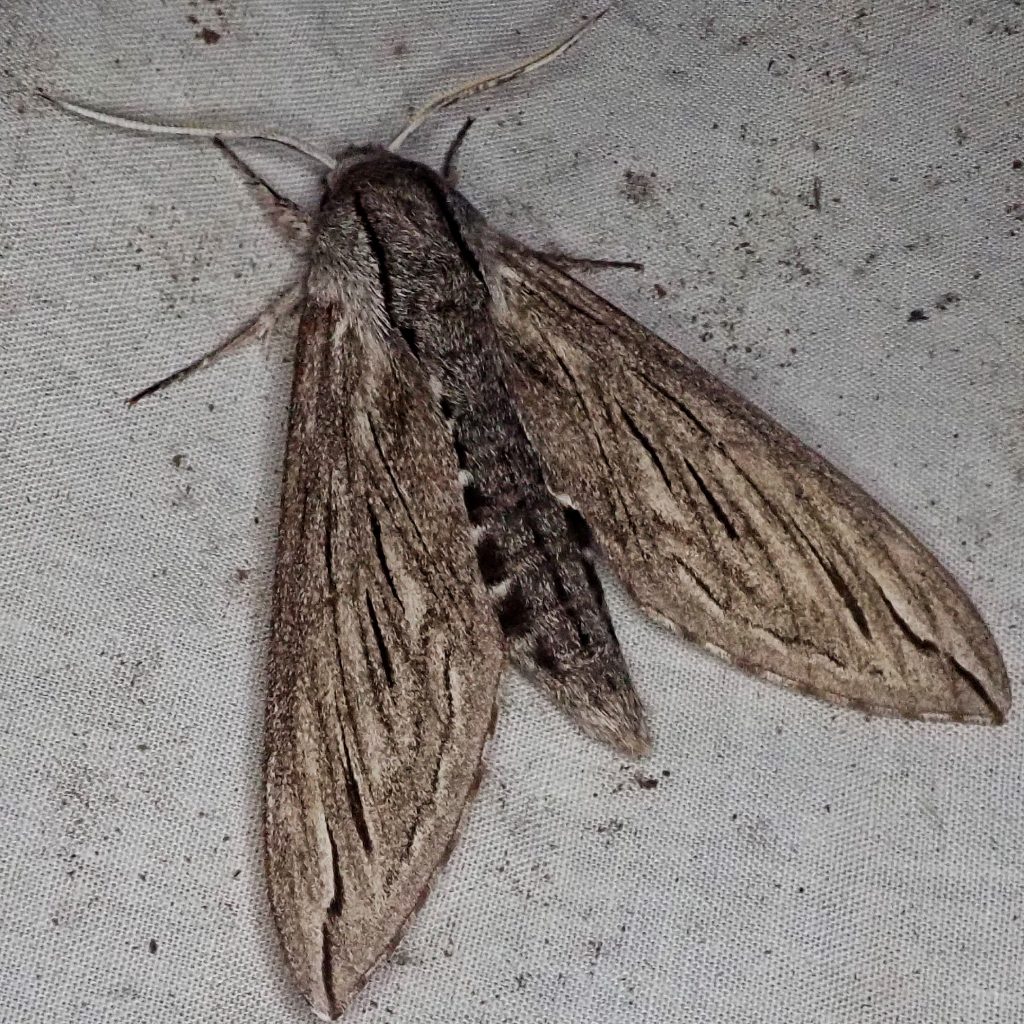
These were unquestionably the moths of the night on my trip to the McKenzie River, having never seen Sphinx chersis before. I actually guessed fairly quickly what species they were, since they looked just like the photos, there was a fair amount of Fraxinus (ash) in the area (albeit mostly charred), and the McKenzie River is known for being a good area in which to find them.
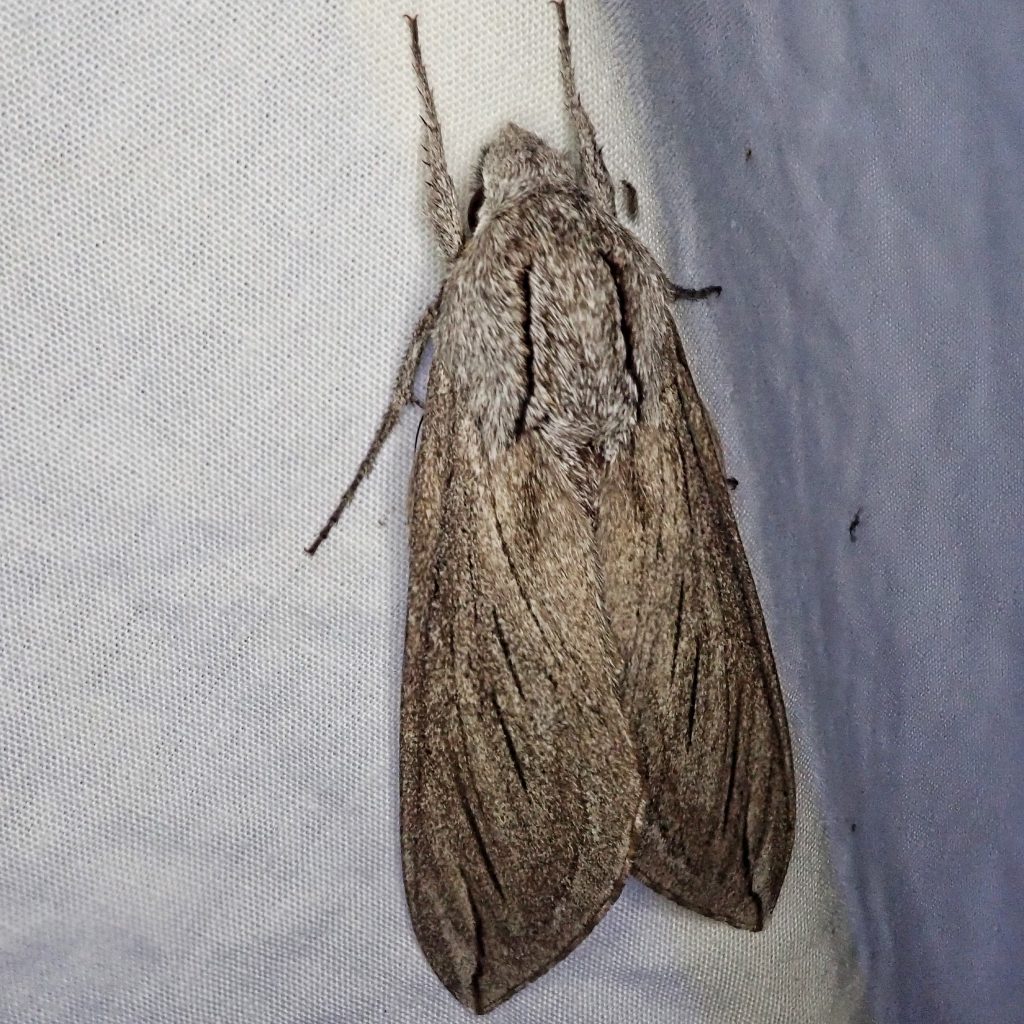
But I was puzzled by how small they were. My primary resource showed a minimum fw length of 53mm, and the first one I found only measured 46mm. And the second one that showed up was even smaller, with a 42mm long forewing. That is a significant size differential from the norm, so I sent some photos to Tomas Mustelin, who agreed they were oddly small and wondered if they might be S. asellus, an eastside species that could have been blown in by the gale force winds that not only started the wildfire by blowing down power lines, but greatly exacerbated its intensity in the first few days.
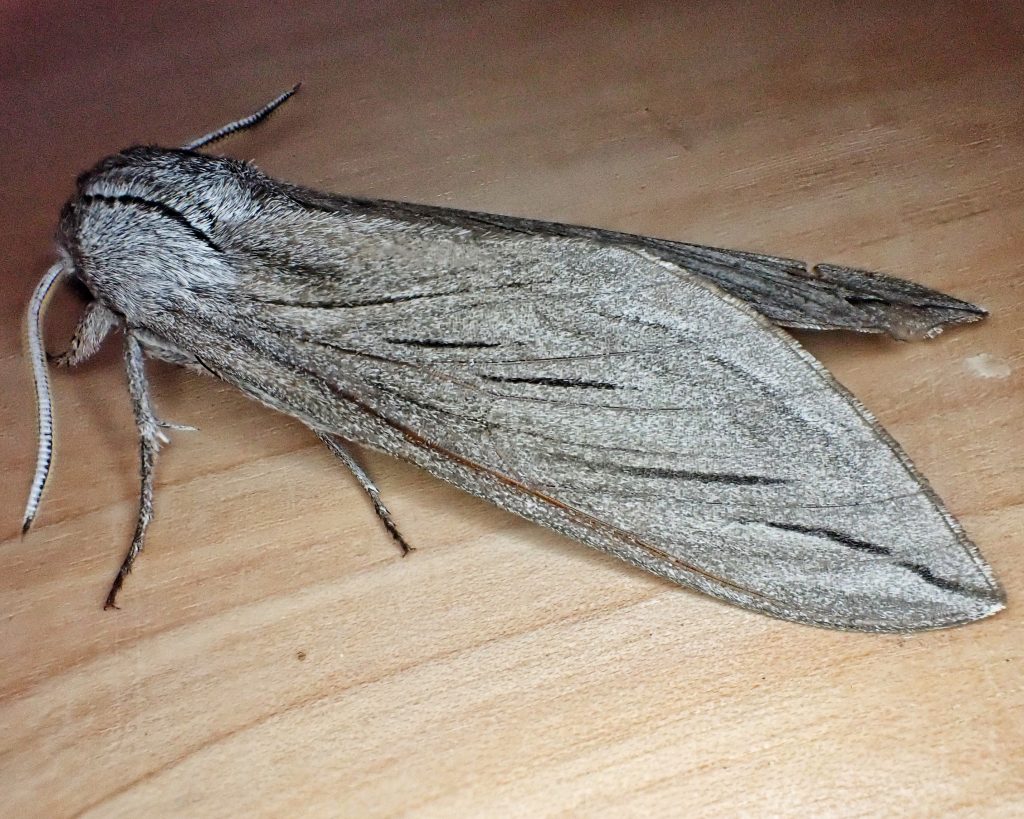
But after examining them Tomas concluded that they were indeed Great Ash Sphinx Moths. What caused their stunted growth is just a matter for speculation, although some combination of reduced food supplies (either because of the fire or the conditions preceding it), and early diapause/pupation (also possibly having to do with the fire), would seem a likely candidate.
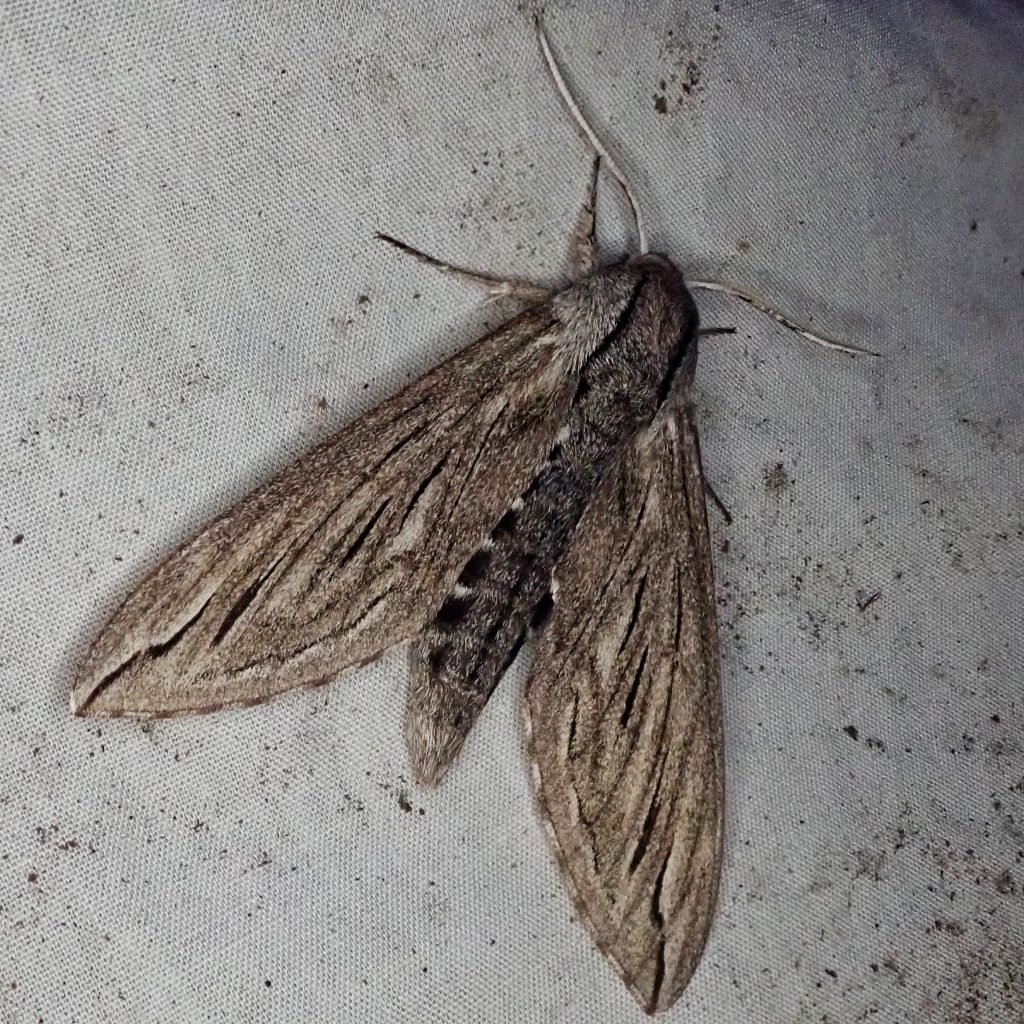
Description-Largest Sphinx moth in our region (fw length usually 53-58mm) light grey moth with a series of 6 black slashes extending down the narrow, pointed forewing; the abdomen is grey on top, and black and white banded on the sides; hindwing is oval, with diffuse black and grey bands.
Similar species–Sphinx perelegans is darker, somewhat smaller, and stockier.
Habitat-Low to mid elevation mixed forests and riparian corridors.
Range-North American native; west of the Cascades and in the Columbia River Gorge, in our region; seems to be more common in Oregon than Washington.
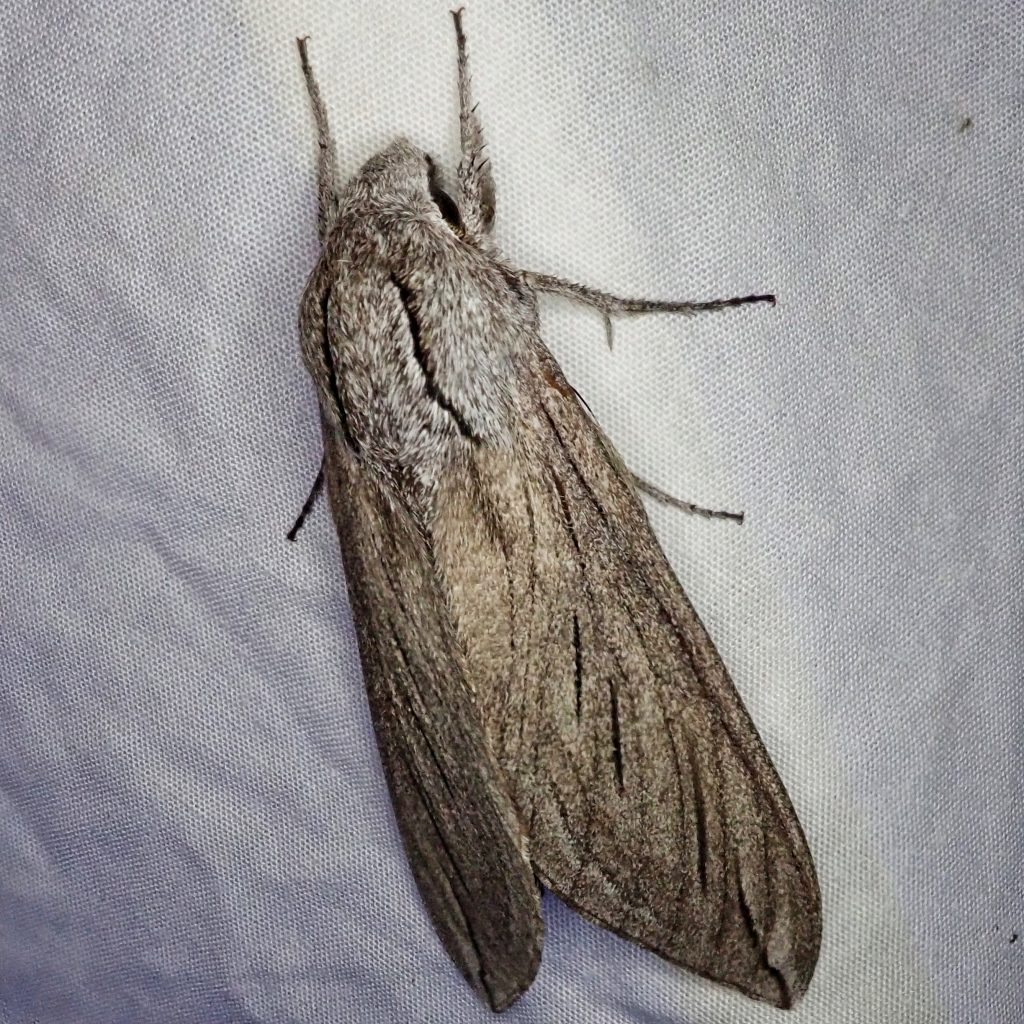
Eats-Larval hosts include ash (Fraxinus spp.), cherry (Prunus spp.), aspen (Populus spp.), and probably others.
Reproduction-Univoltine in our area.
Adults active-April to September, peaks from May through July.
Etymology of names–Sphinx refers to the mythological monster with the head of a woman and body of a lioness, who posed riddles to travellers, and killed them when they failed to answer correctly. It’s possible Linnaeus thought the caterpillar resembled the Sphinx. The specific epithet chersis may be from the Greek for ‘dry land’, or from the Latin for a land tortoise, or conversely, a type of toad. But I can’t find any information on Hübners reasoning for this name.
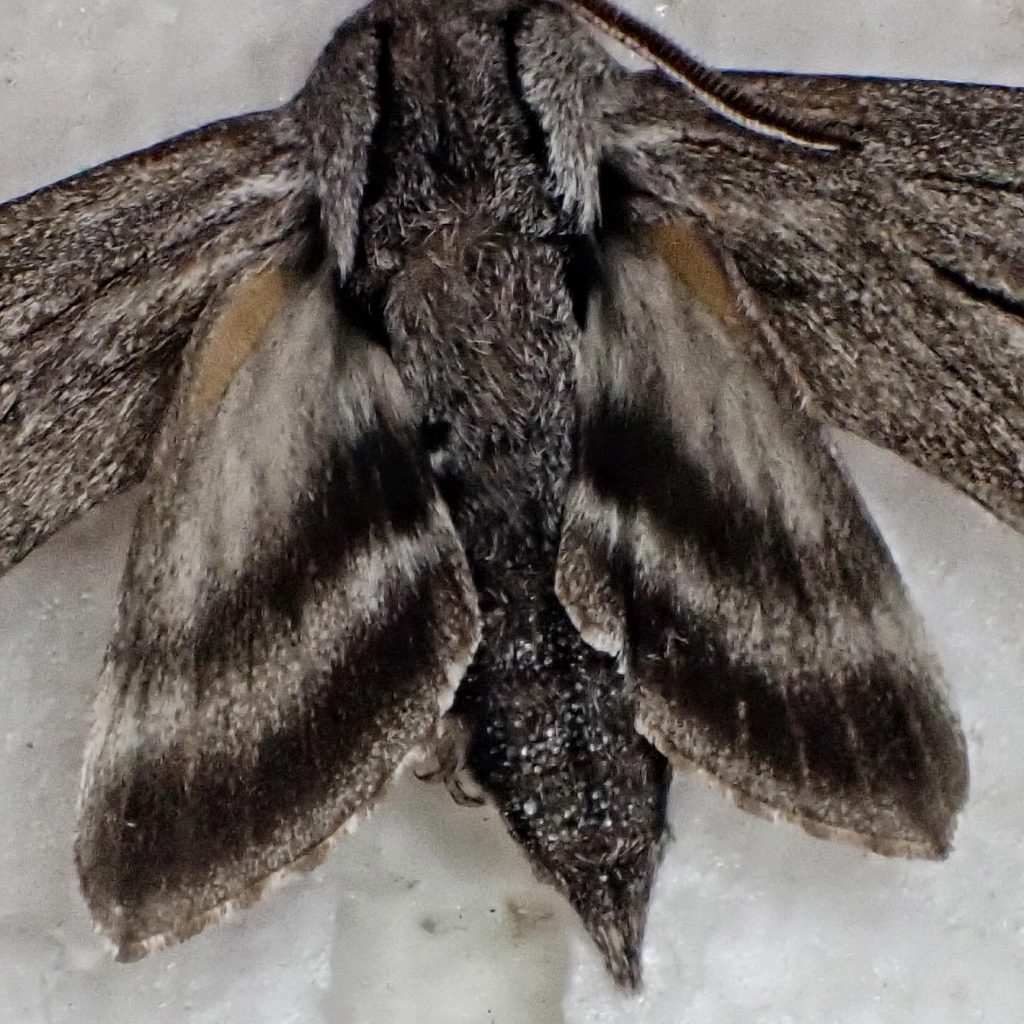
http://pnwmoths.biol.wwu.edu/browse/family-sphingidae/subfamily-sphinginae/sphinx/sphinx-chersis/
Species Sphinx chersis – Great Ash Sphinx – Hodges#7802 – BugGuide.Net
https://naturallycuriouswithmaryholland.wordpress.com/category/great-ash-sphinx-moth/
Moth Photographers Group – Sphinx chersis – 7802
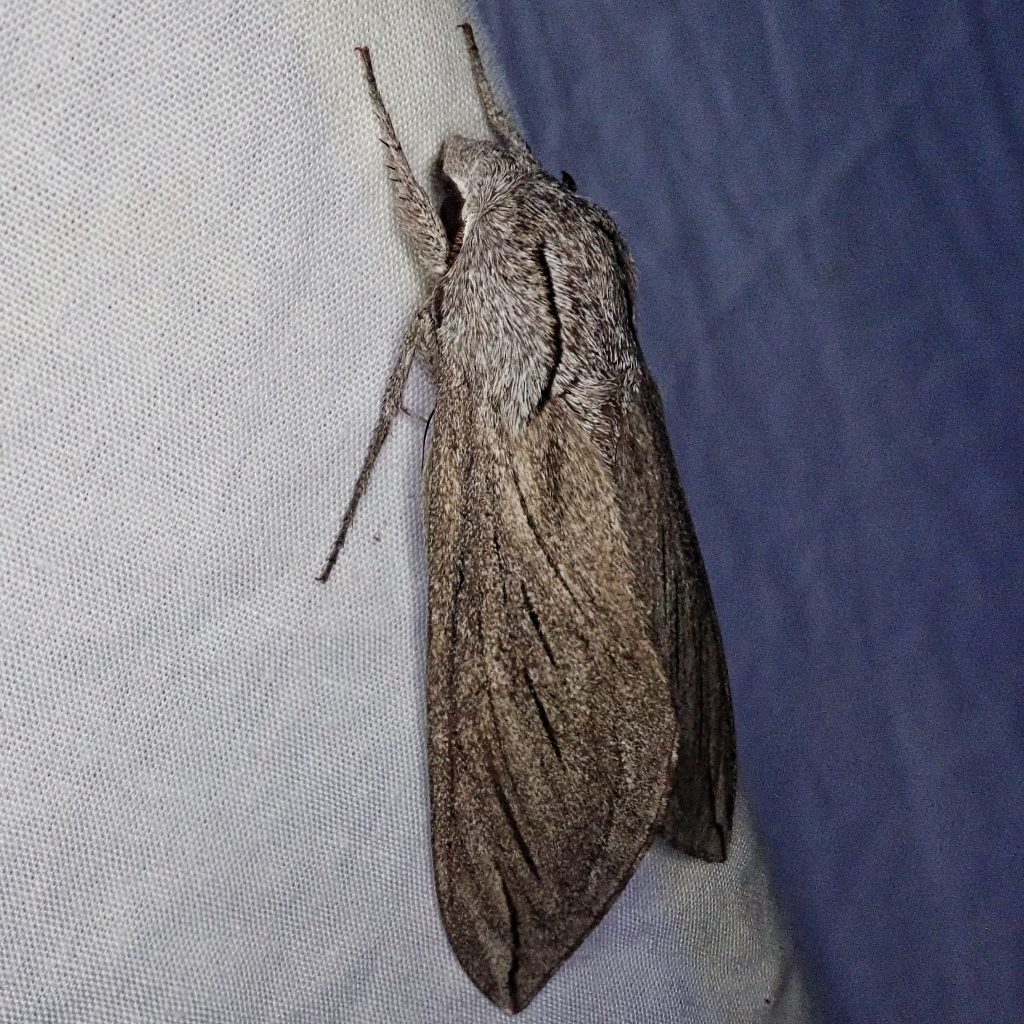
great photos!
Thanks!
Are sphinx moths and hummingbird moths one and the same, or are hummingbird moths a subset? I remember taking photos of what I thought was a hummingbird, and not until I downloaded them onto the computer did I realize it was a moth! Just beautiful and really working the flowers in the middle of the day (this happened to be in Ouray, CO).
I think that what people call hummingbird moths are in the family Sphingidae, which contains the Sphinx moths. Hyles lineata (White-lined Sphinx) is often called a hummingbird moth. So I guess you’d call them a subset. Moths in the genus Sphinx are nocturnal.
Interesting – yes I knew moths were generally nocturnal and that was another reason I was surprised to see this guy!
Wow – pic 1 & 3 look very similar to Sphinx canadensis… even the small size is range for canadensis
If it wasn’t for location I would have thought particularly those 2 pics were canadensis. The other pics do look like chersis . Interesting 🤔 Did u happen to keep a specimen depicted in photo 1 and/or 3. Great blog 👍
I thought so too! I sent them to Tomas Mustelin, and he confirmed them as S. chersis. Thanks for your kind words!
I should clarify- I thought they were unusual, but Tomas thought they might be S. canadensis. That is why I sent them to him. But, when he compared them to asella, librocedrus, and canadensis, he was still sure they were chersis.